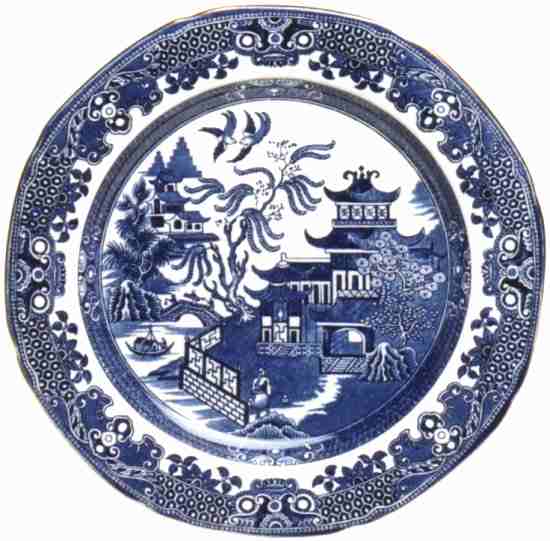|
The Willow Legend
There was once a Mandarin who had a beautiful daughter,
Koong-se.
He employed a secretary, Chang who, while he was attending to his master's accounts, fell in love with
Koong-se, much to the anger of the Mandarin, who regarded the secretary as unworthy of his daughter.
|

The secretary was banished
|
The secretary was banished and a fence constructed around the gardens of the Mandarin's estate so that Chang could not see his daughter and Koong-se could only walk in the gardens and to the water's edge.
One day a shell fitted with sails containing a poem, and a bead which Koong-se had given to Chang, floated to the water's edge. Koong-se knew that her lover was not far away. |
|
The
unwanted betrothal
She
was soon dismayed to learn that she had been betrothed to Ta-jin, a
noble warrior Duke.
She
was full of despair when it was announced that her future husband,
the noble Duke, was arriving, bearing a gift of jewels to celebrate
his betrothal. |
|
|

the banquet house
|
However,
after the banquet, borrowing the robes of a servant, Chang passed
through the guests unseen and came to Koong-se's room. They embraced
and vowed to run away together.
The
Mandarin, the Duke, the guests, and all the servants had drunk so
much wine that the couple almost got away without detection, but
Koong-se's father saw her at the last minute and gave chase across
the bridge. |

chase across the
bridge
|
|
The couple escaped and stayed with the maid that Koong-se's father had dismissed for conspiring with the lovers.
Koong-se had given the casket of jewels to Chang and the Mandarin, who was also a magistrate, swore that he would use the jewels as a pretext to execute Chang when he caught him.
One night the Mandarin's spies reported that a man was hiding in a house by the river and the Mandarin's guards raided the house. But Chang had jumped into the ragging torrent and Koong-se thought that he had drowned.
|

hiding in the house
of the maid
|
|

the lovers escape
by boat
|
Some days later the guards returned to search the house again.
While Koong-se's maid talked to them, Chang came by boat to the window and took Koong-se away to safety. |
|
the murder
of the lovers
They
settled on a distant island, and over the years Chang became famous
for his writings. This was to prove his undoing. The Mandarin heard
about him and sent guards to destroy him.
Chang
was put to the sword and Koong-se set fire to the house while she
was still inside. |

|
|

eternal peace
Thus they both
perished and the gods, touched by their love, immortalised them as
two doves, eternally flying together in the sky. |
|

